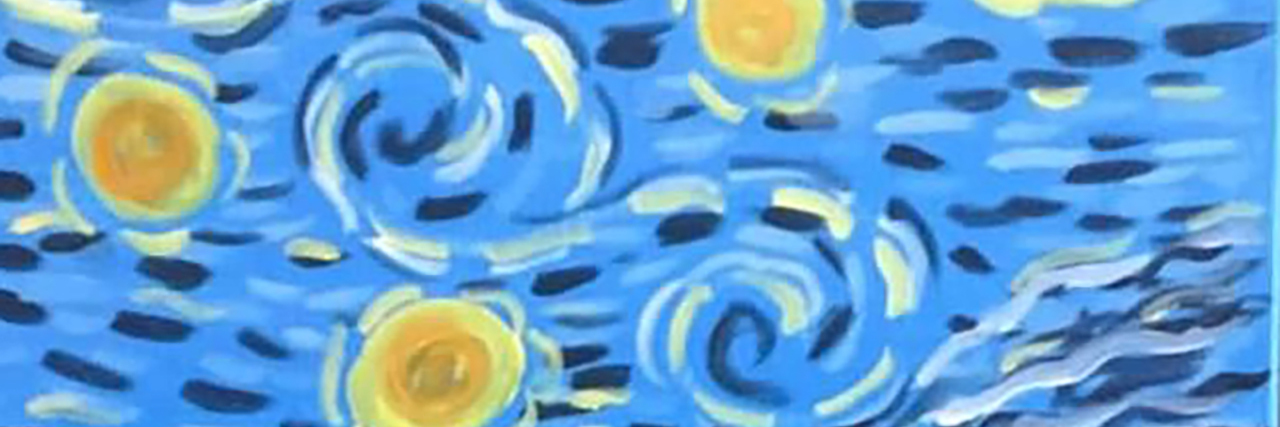How Art Helps Me Express Myself as a Stroke Survivor
During my sophomore year in high school, I took an introduction to drawing class because I loved using different types of mediums to make the picture come alive with color or in black and white. This came in handy when I was recovering from surgery senior year. I wasn’t able to do much as I was healing from ostomy surgery, so I’d sit in the lawn chair outside and draw the roses in my mother’s garden, my Lhasa Apsos, and other favorites such as the Muppets. Then life happened and I didn’t have much time for it.
After being married for several years, I had a stroke. I was hospitalized for a week and then discharged home to start rehab. Occupational and physical therapy helped strengthen my weakened right side due to being temporarily paralyzed, but I was still afraid of trying my hand at sketching because my eye-hand coordination wasn’t 100 percent. I decided to make homemade cards since it seemed simple enough. I used photographs I took, stickers and cut outs from my Sizzix machine.
Then a year ago, I noticed a place in a small town 10 minutes from me. It was called “Imagine That Olcott,” a business where there was a huge selection of ceramics people could paint in the store or get a take-home kit. I decided to go in and asked to paint a scene on canvas since I hadn’t done one in a while. I chose the picture of Niagara Falls with a Picasso theme to it. I asked one of the owners, Christine, if she’d be able to give me step-by-step instructions. She took the time to explain how to hold the brush, blend colors, and what size brush to use when it came to painting different areas on canvas.
When I started to paint, I was a little nervous that my picture wouldn’t turn out well as I still had problems with coordination and making straight lines. Christine guided me on which colors to start with, told me where to put the straight lines, and then the next thing I knew I was adding swirls, more lines and a variety of colors. I was amazed that I actually completed a picture that was so unique. I thanked Christine for taking the time to teach me and she stated that she only gave me brief instructions because she wanted to see what I’d do afterwards. She was impressed with how I just followed through creatively, and said I did one of the toughest paintings they had in the store.
My confidence continued to grow as I’d stop by weekly to try my hand at painting another picture. Christine guided me again when I was at the easel ready to start on a fresh canvas. I listened to her instructions carefully and went with my gut instinct to let the brush glide across, pull out colors, and use different shades of paint to make the artwork my own.
I mentioned during one of our conversations that I took an introduction to drawing class in high school and really enjoyed it. After my stroke, I made an attempt to draw but it didn’t look like anything. Christine then looked me in the eye and told me not to give up because I still have talent within my heart, and that doesn’t go away. I just need to focus on that and the rest will come in time. Also, art should be fun to do and not perfect, because what I see and what others see in my creation are two entirely different things.
After I started this hobby, it helped release my stress while exercising my motor skills that were affected by the stroke. When I participate in creative activities such as painting or photography, it engages many different parts of the brain. I’ve researched how art therapy has a positive effect on stroke survivors. There are several benefits of positive physical and mental health stimulation, such as being creative in different ways like collage, drawing, sculpture and painting. It can help the stroke survivor feel more in control, increase their feeling of worth, and make them more relaxed and sociable.
Stroke recovery can be possible at any age and any stage as long as the patient puts in the time and effort to do intense repetition, which makes a huge difference in their rehabilitation process. The brain never stops rewiring itself throughout our lives. Whether it’s been five, 10 or 15 years, there’s always hope for recovering. Art can be used to communicate physically what some patients can’t say verbally. Through creative expression, we are able to open the window into our emotions and thoughts.
I’m very grateful that someone took the time to show me how to creatively express myself. My self-esteem wouldn’t have grown if it weren’t for Christine. She encouraged me to think outside the box and just be myself when creating a masterpiece. It doesn’t have to be perfect as long as I have fun doing it.

